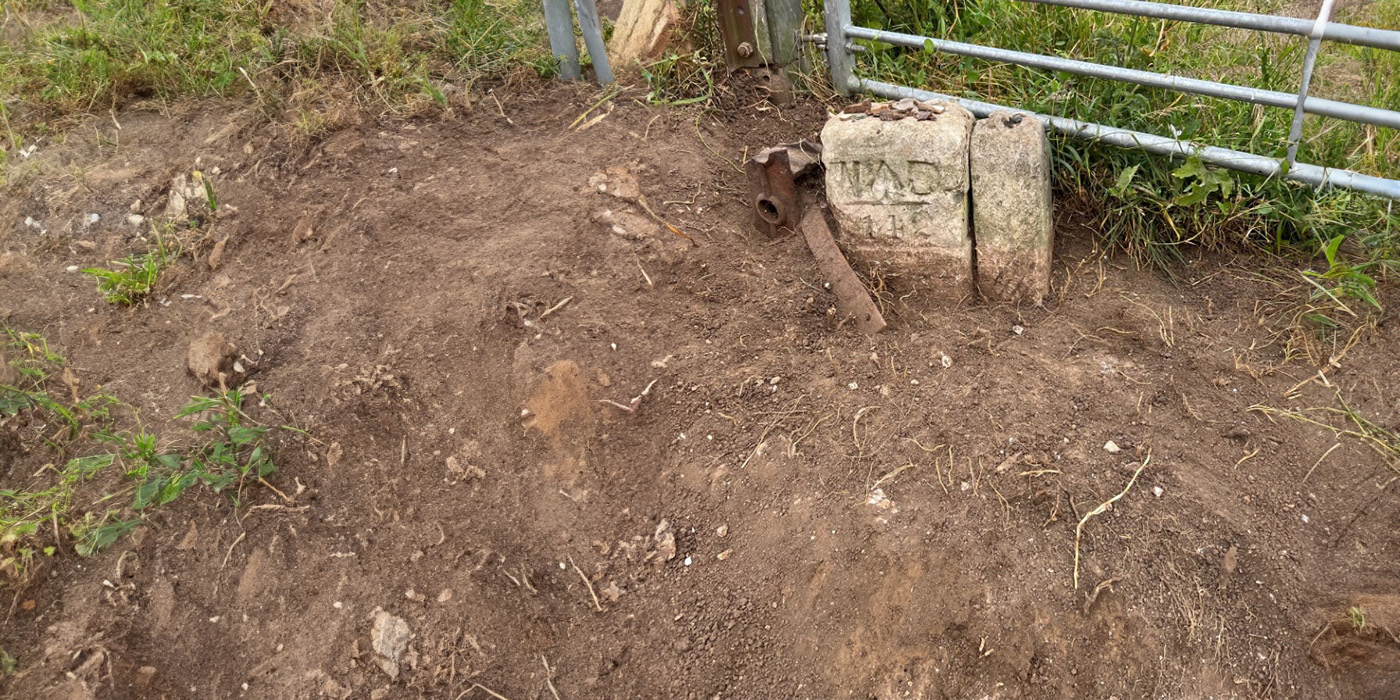Ahead of the main works, which will see £7.7 million invested by SSEN in the Fort Widley to Fareham electricity infrastructure, SSEN completed a detailed assessment to establish whether construction of the proposed project might affect the local environment – this included archaeological, ecological and hydrological studies, and consultation with key stakeholders such as Portsmouth City Council, Hampshire County Council and Natural England.
It was apparent from these assessments that the local landscape is one of high archaeological and historic interest and for this reason construction of the project has been closely supervised by archaeologists from ADAS. It was during this supervision that the team unearthed a long-forgotten and uncharted parish boundary marker stone, zig-zag defence trenches from World War II, and a penny made in the 1500s.
Project Manager for SSEN, Ben Wollaston explains more:
“SSEN carefully assesses any area where works are to be carried out and in this instance that meant involving experts from our own in-house environmental team and external agencies, such as archaeologists from Hampshire County Council and ADAS.
“Now that these finds have been recognised and recorded, SSEN’s works are underway to boost the resilience and capacity of the underground power network for our customers in and around the Fort Widley and Fareham areas; helping them to meet their net zero goals through a network fit for the future.”
Ben continued:
“SSEN’s project team would like to thank Portsmouth City Council, Hampshire County Council and ADAS for their assistance and support during the months these preparatory works were undertaken and for enabling us to take the time to carry them out with the maximum consideration for the environment and its archaeology. Through this partnership working, we have been able to find these historic items which are part of Portsmouth’s heritage.”

ADAS Associate Director of Archaeology and Historic Buildings, Dr Diarmuid O Seaneachain said:
“ADAS is working closely with SSEN and the Hampshire County Council Archaeologist to ensure that all potential impacts from this project to the historic environment are fully assessed and appropriately mitigated. I’m pleased to say that ADAS have successfully been able to work with all stakeholders to design out most impacts to this sensitive historic area in this scheme.
“Our archaeological investigations carried out ahead of the development have also led to several really interesting new discoveries; including a previously unknown section of 19th or 20th century zig-zag military training trenches associated with Fort Widley, a previously unknown post-medieval parish boundary stone and a penny dating from the time of Henry VIII.”
Artefacts recovered from the project are currently being assessed by ADAS and they will be transferred over to the relevant legal landowner/or the Local Museum once the final archaeological report has been submitted and the project has been completed.
Set to complete in the summer of 2024, SSEN’s programme of works will include the replacement of 2.2km of cable with modern and more efficient underground cables, which will connect to the transmission tower in Paulsgrove, providing a robust and flexible network for some 120,000 local homes and businesses.
While boosting and improving the network itself, the route of the replacement cable will also be more direct and will therefore reduce the potential impact of the works on the local community and the natural environment.
While there are no planned power supply interruptions for the duration of these works, a section of the project may require some temporary access restrictions at a future date, to enable safe working . Any potential restrictions will be communicated to customers well in advance.
